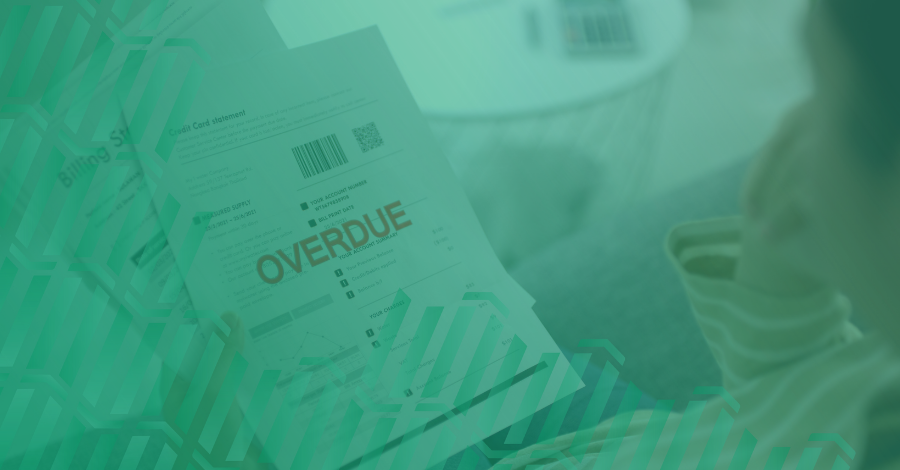Every business will have to deal with non-paying customers at some point – but how you handle that situation will set your business apart from the competition?
There’s a never-ending list of excuses we hear from customers who don’t want to pay a bill, but learning how to deal with them can be tricky…
A plumbing business could be dealing with the issue of non-paying customers, but it applies just the same to an HVAC company or an electrical contractor.
This begs the question:
As the manager, what should you do when a customer refuses to pay for work done?
Keep reading to explore the reactive steps and preventative measures you can take to ensure you get paid on time…

Importance of Properly Handling Non-Paying Customers
It’s important to properly handle non-paying customers as unresolved payment issues impact your cash flow but can also damage your image or reputation.
As a business stuck in a tricky situation, it’s necessary to approach it with professionalism and a commitment to finding fair resolutions. By doing so, you not only protect your immediate financial interests but contribute to the long-term sustainability of your business.
Main Reasons Why a Customer May Refuse to Pay
Understanding the underlying reasons behind a customer’s refusal to pay is a good place to start when looking for effective solutions.
The primary factors that often contribute to non-payment issues are concerns about the quality of work, communication problems, and financial inability.
Quality of Work Issues
One of the common reasons customers may withhold payment is dissatisfaction with the quality of work delivered. To address this, proactive communication is key. Regularly check in with clients throughout the project, ensuring their expectations align with the progress.
If concerns arise, address them promptly, offering solutions or revisions to meet their requests (within reason). By actively managing expectations and quality throughout the project, you can minimize the risk of non-payment when the work is completed.
Communication Problems
Open communication is the cornerstone of any successful business relationship but misunderstandings and unclear expectations can lead to payment disputes.
To mitigate this, set up clear channels of communication when the inquiry is made and define the project scope, deliverables, and payment terms in the contract.
Financial Inability
In some cases, customers genuinely face financial challenges that hinder their ability to make timely payments and sensitivity is important when dealing with such situations.
Initiate open and honest conversations about their financial constraints and explore options such as flexible payment plans or no late fees to ease their burden while still getting compensated for your work and resources. Striking a balance between empathy and assertiveness can lead to mutually beneficial resolutions.
Disagreement Over Charges
Disputes over charges often arise when there is a lack of clarity regarding pricing or unexpected costs. Prevent this by providing a detailed proposal with estimates and having the client sign off on them before starting work.
If a dispute does arise, approach it with transparency. Sit down with the client and break down the charges, explaining the reasoning behind each cost. This approach can alleviate concerns and help get your business paid faster.
How to Handle Non-Payment Issues
When faced with a customer refusing to pay, a systematic approach will make sure it’s handled with consistency, regardless of the client. Implement the following three steps to increase the likelihood of a satisfactory resolution:
1. Communicate with the Customer
It may be difficult, but it’s important to understand the reasons behind a customer who refuses to pay. Approach the conversation with empathy, actively listen to the client’s concerns, and communicate your expectations to find the best possible solution.
2. Document All Paperwork
Thorough documentation is your best defense in non-payment disputes. Maintain a comprehensive record of all communication, contracts, invoices, and project details.
With the right software, this information can be stored digitally and becomes easily accessible at all times. This documentation serves as evidence in case legal action becomes necessary and reinforces your position during negotiations.
3. Take Legal Action (if Necessary)
If all attempts at resolution fail, and non-payment persists, consult legal professionals to explore your options. Taking legal action should be a last resort, but having a well-documented case strengthens your position if it becomes unavoidable.
Best Practices for Handling Non-Payment Issues
Adhering to the following best practices will make the company’s approach to non-payment issues professional, ethical, and effective:
Maintain Professionalism
Maintain a professional demeanor throughout the process. Avoid confrontations, and focus on finding solutions. Professionalism not only preserves your business reputation but also positions you favorably in potential legal proceedings.
Be Organized
Organizational skills will pay off when managing no pay situations. Keep meticulous records, set reminders for payment deadlines, and have a structured system for automating all aspects of client interactions.
This organization not only aids in dispute resolution but also contributes to the overall efficiency of your business operations.
Be Patient
Every business needs revenue and cash flow, but patience is a virtue when dealing with customers who are refusing to pay. If you’re operating ethically, this shouldn’t be a reoccurring issue, and rushed decisions or aggressive tactics can escalate the situation and make finding a resolution nearly impossible.
Learn From Experience
Every dispute is an opportunity for learning and improvement. Reflect on each case, identifying areas where communication, documentation, or client screening that could have been overlooked. Use these insights to continually refine your approach to prevent future occurrences.
Preventive Measures to Avoid Non-Payment Issues
Prevention is the best strategy when it comes to non-payment issues. Implement the following proactive measures to reduce the likelihood of disputes.
Screen Clients Ahead of Service
Thoroughly vet clients before engaging in projects. Consider their payment history, the type of service they need, and if your company is the best fit for their needs. This screening process can help identify problematic clients before they become an issue.
Clearly Outline Payment Terms
Set clear and transparent payment terms and outline the details in the contract. Communicate expectations regarding payment schedules, late fees, and any other relevant financial details.
Use a Signed Contract
A legally binding contract is a fundamental tool in preventing payment disputes. Before starting work, outline project details, deliverables, and timelines in a signed agreement. This contract can always be used as a reference point if a dispute arises.
Provide Detailed Invoices
Detailed invoicing is the easiest way to prevent disputes over charges. If you’re worried about losing time on administration work, use invoicing software to digitally store templates and quickly itemize all costs and provide descriptions of services rendered with the click of a button. This transparency builds trust and reduces the likelihood of misunderstandings.
Send Updates on Project’s Progress
Regularly update clients on project milestones and progress. This proactive communication ensures that clients are informed and have realistic expectations, reducing the chances of dissatisfaction and non-payment.
Leverage a Good, Better, Best Pricing Model
There is a lot to consider when deciding how much to charge for your services. Location, customer demographics, team experience–the list goes on.
If you have good, better, best pricing model for your services – customers will select the option they can afford and are much more likely to pay the bill in a timely manner.
Offer Early Payment Incentives
Encourage prompt payments by providing incentives, such as discounts or additional services for clients who are willing to settle their bills early. This approach not only fosters positive client relationships but also is a quick way to increase cash flow.
Secure a Down Payment
If you’re completing a larger project, requesting a down payment before initiating work establishes a commitment from the client and provides your business with initial financial security. This upfront payment can act as a safeguard against non-payment.
Leverage Technology to Help Prevent Non-Payments
Incorporating technology into your business processes can streamline payment procedures and reduce the risk of non-payment. Utilize invoicing and accounting software to automate billing processes, set up reminders for payment due dates, and generate detailed financial reports.
Additionally, consider implementing customer self-service solutions like online payment gateways that offer secure and convenient transaction options. This not only improves the client experience but also reduces the likelihood of delayed payments due to traditional banking processes.
Decrease Your Number of Non-Paying Customers Today!
By applying the strategies and best practices outlined in this guide, you can significantly decrease the occurrence of refusal of payment issues within your business. However, it’s important to remember that despite your best efforts, some situations may still arise. The key is to approach these instances with a proactive and solution-oriented mindset.
Continuously learn from each experience to refine your strategies and streamline your business operations. By leveraging technology, maintaining open communication, and implementing preventive measures, you can get paid on time and increase the overall productivity of your business.
To help, we’ve prepared a guide with 10 templates to help you start communicating like a pro and ensure those services are always being paid for. Download it below!

Cristina Maria
I'm here to bring you next-level strategies to the field service industry. When I'm not working on the best tips to grow your business, I'm on the lookout for sci-fi novels and cookie recipes.









